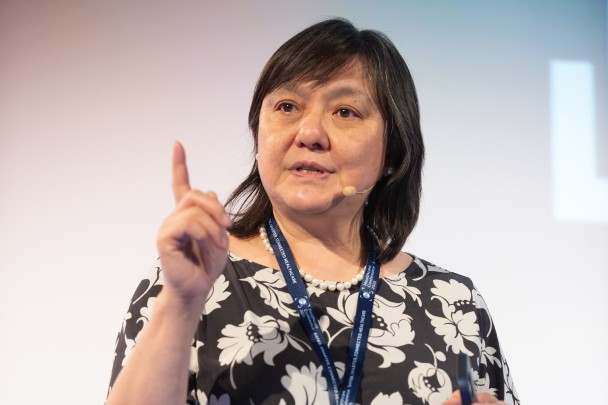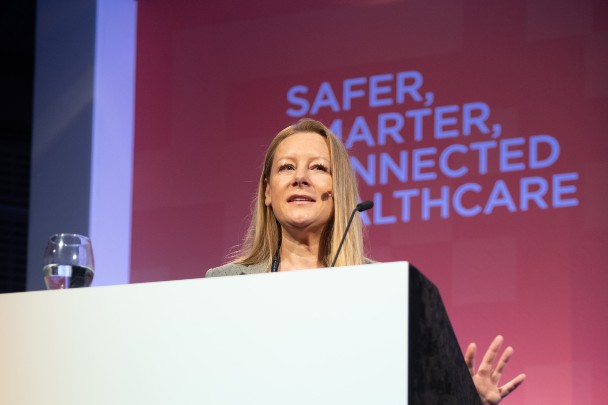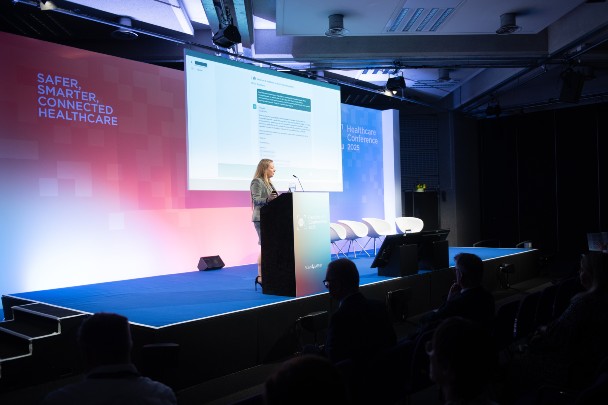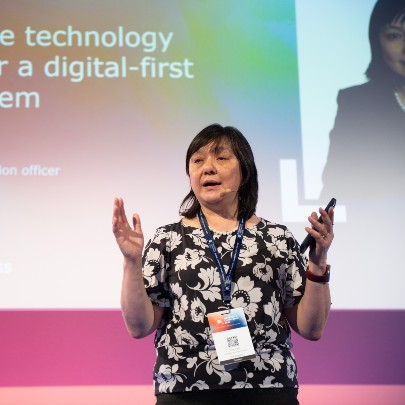June 20, 2025
At this year's GS1 UK Healthcare Conference, healthcare leaders, policy makers and technology specialists came together to explore how data and digital innovation can help build a more joined-up, patient-centred health and care system.
Among the standout sessions were two that tackled this challenge head on. Ming Tang, chief data and analytics officer at NHS England, and Claire Harrison, chief digital and technology officer at the Medicines and Healthcare products Regulatory Agency (MHRA), shared powerful perspectives on how digital infrastructure, standardised data and a bold approach to innovation will be critical to the future of the NHS. Drawing on their respective experiences, both speakers made it clear that digital transformation is not about the future, it is a priority for right now.
Putting people not services at the centre
In a thought-provoking keynote, Ming set out a clear vision for a digital-first health service grounded in the lived experiences of patients and clinicians.
"If you take nothing else away," she told the audience, "it's that we need to start thinking about how we create an interoperable system, data and digital, that supports the person. Because that's what we're about. That's what we're trying to do."

Ming Tang, chief data and analytics officer at NHS England
Ming emphasised the need to shift the system's focus from collecting data around organisational structures like inpatient or outpatient care to understanding and supporting a person as they move through the system. "The patient is the same person experiencing all of that, but the data doesn't follow them. That's what has to change."
She challenged assumptions around digital exclusion, sharing a personal experience to illustrate how the right tools can empower people.
"I'm from a Chinese family. My parents don't speak much English. To have voice translation in an app would be amazing for them. It would give them so much more agency. I was translating at the doctors for them when I was ten. That's not uncommon across many communities."
Building inclusive interoperable systems
Meeting people where they are means designing digital services that are inclusive, joined up and easy to use. Whether it's appointments, test results or long-term condition management, Ming argued, patients should have access to information that “synchronises with the rest of their life.”
To deliver that, fundamental change is needed in the infrastructure that underpins digital care. "We've done a lot of public engagement. People say, 'Why can't we have a banking app equivalent for the NHS?' And they're right. But to get there, we have to change the technical standards. We need to surface the data, get it out of the systems and make it useful at the point of care."
This includes NHS England's ongoing work to develop a single patient record and a common data framework, lifting standardised data from systems that "don't talk to each other" and creating a platform that others can build on. “It's really about modularity,” she said, “about creating a platform that becomes the foundation for innovation.”
Supporting safe and smart regulation
Claire built on that vision by showing how regulation is also evolving to keep pace with digital change. From AI tools to monitoring products after they're on the market, the MHRA is building digital solutions into every stage of regulation.

Claire Harrison, chief digital and technology officer at the Medicines and Healthcare products Regulatory Agency (MHRA)
"We're looking at AI," said Claire, "but we're also thinking beyond that to quantum, to data science, to cyber. What we're doing is using technology to support our people, not replace them."
That principle of "support not substitution" was central to her message. Across everything from clinical trials to pharmacopoeia enquiries, new tools are being used to assist decision-making and reduce the burden on staff.
"We're not taking a blanket risk-averse approach," she explained.
"We take a risk-proportionate view. That means we can move faster in some areas while still making safety the top priority."
Improving speed and safety with digital tools
One example Claire shared was a digital tool that identifies counterfeit or unauthorised medical products being sold online. What once took up to 30 hours of manual review can now be done in three.
"This kind of gain is huge," she said. "And it's already being used by regulators in other countries as well as organisations like the British Dental Association. The implications for patient safety are immediate."
What matters, she stressed, is that all digital tools are grounded in human oversight. Guardrails are built in from the start and each decision is sense-checked against expert judgment. "It's still a subject matter expert who makes the decision in the end," she said. "But what we're doing is giving them the tools and time to focus on what really matters."
Creating the conditions for sustainable change
Both Ming and Claire highlighted the need to think systemically. Technology on its own cannot solve healthcare's challenges. The conditions for success must be built on technical standards, cyber security, development support and sustainability.

“Cloud and AI now have a bigger carbon footprint than aviation,” noted Claire.
"One AI-generated image uses as much energy as charging a smartphone. So we're innovating but we're also trying to do it responsibly."
The same applies to talent and culture. "If we don't get digital," said Ming, "people in the NHS are going to lose their will to live and go somewhere else. We've got brilliant people who want to do the right thing. Let's give them the tools and the time to care."
A digital-first NHS is everyone's business
For GS1 UK and the broader healthcare community, the message from both sessions was clear. Data must be accurate, accessible and standardised across settings, organisations and systems. That is the foundation of safer care, better decisions and more responsive services.
Whether in the clinic, the pharmacy or the regulator's office, digital is no longer optional. It is the thread that connects care and the catalyst that can help the NHS meet the needs of tomorrow.



